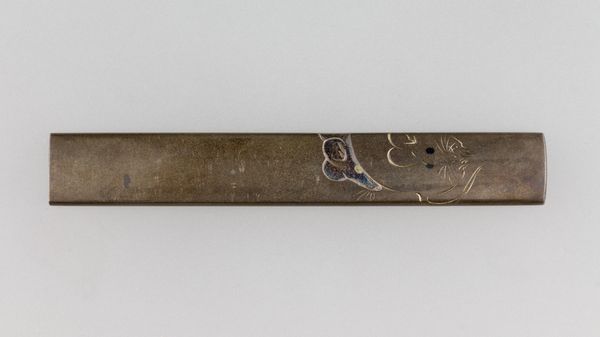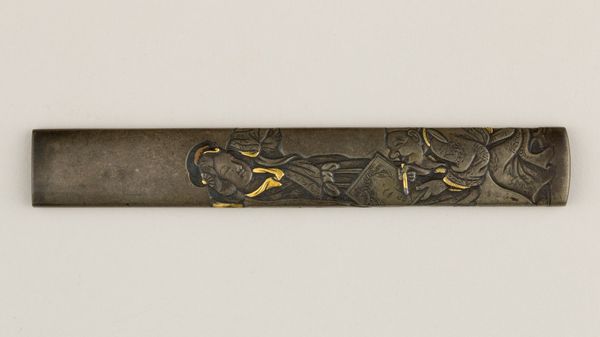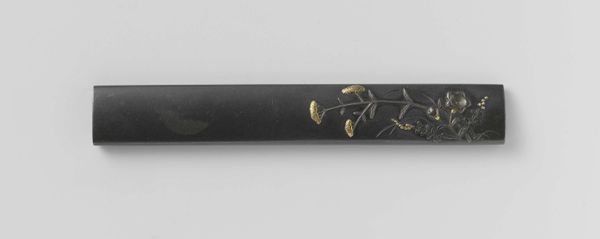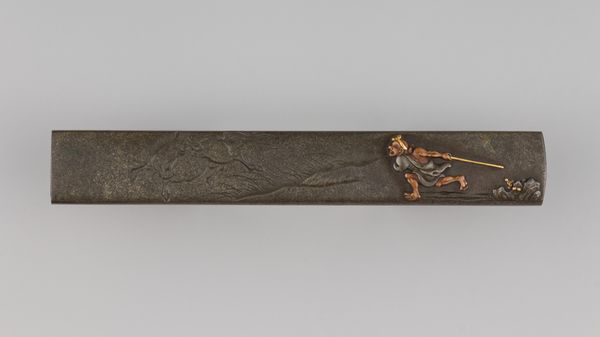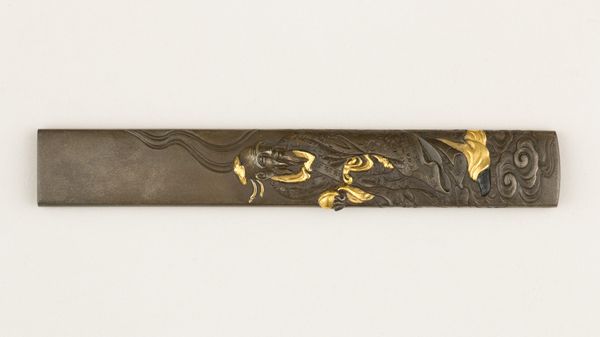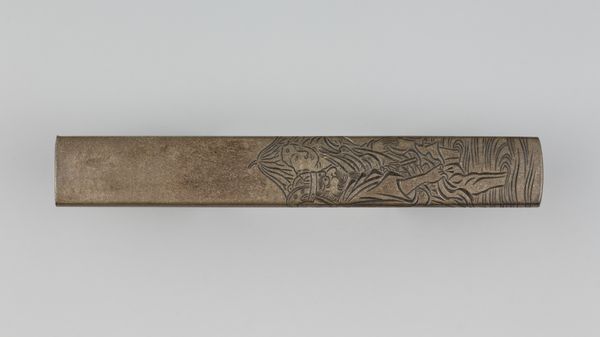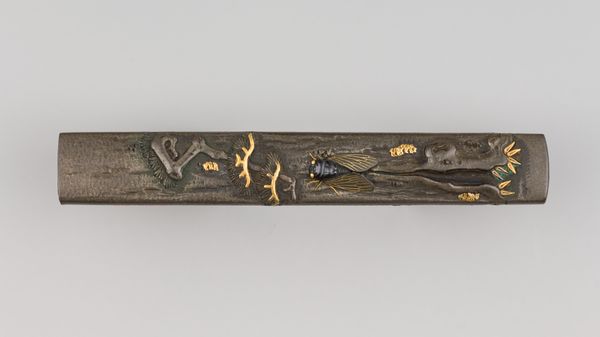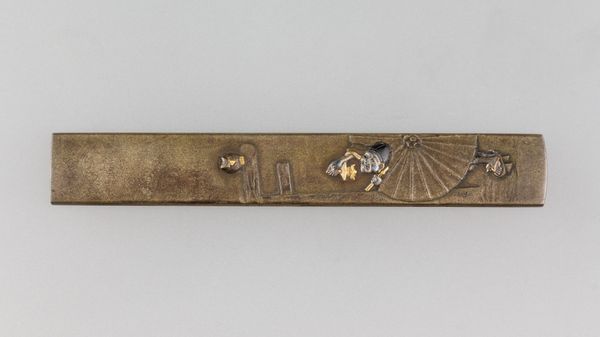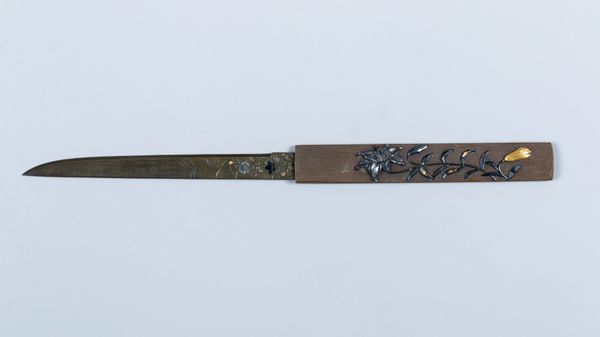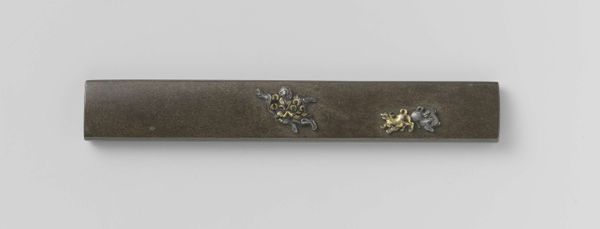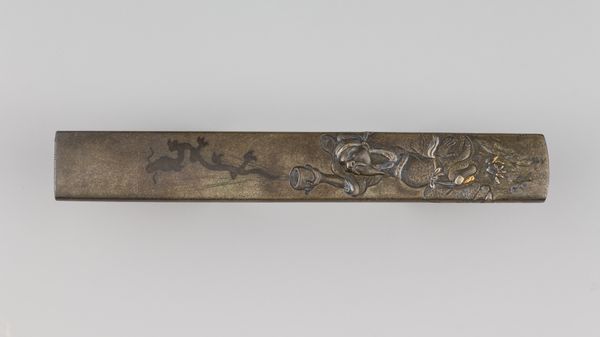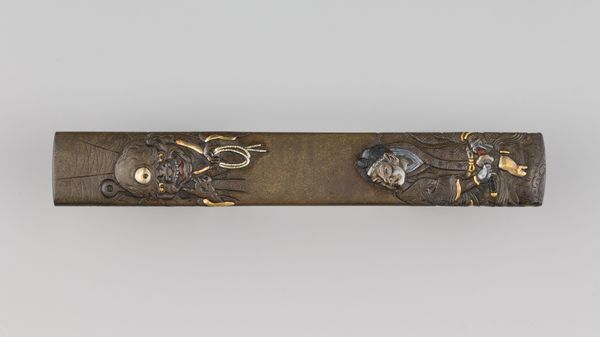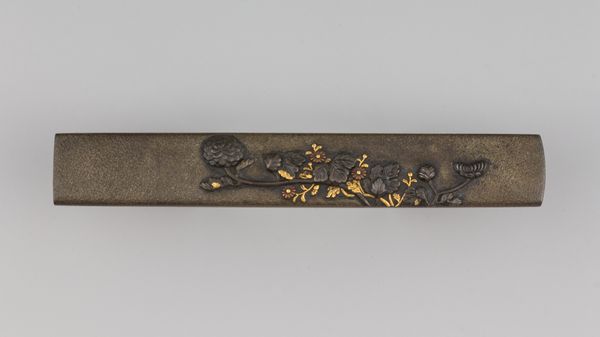
metal, relief, bronze, sculpture, engraving
#
metal
#
sculpture
#
asian-art
#
relief
#
ukiyo-e
#
bronze
#
sculpture
#
decorative-art
#
engraving
#
sword
Dimensions: L. 3 13/16 in. (9.7 cm); W. 9/16 in. (1.4 cm); thickness 1/4 in. (0.6 cm); Wt. 1.2 oz. (34 g)
Copyright: Public Domain
Curator: Before us is a Kozuka, or knife handle, by Iwama Nobuyoshi, crafted in the 19th century. This particular example, rendered in metal, currently resides here at the Metropolitan Museum of Art. Editor: Immediately, my attention is drawn to the understated elegance. The palette is restrained, the forms meticulously rendered yet integrated seamlessly within the bronze or iron. It projects a quiet refinement, a subdued mastery over the medium. Curator: Indeed. Kozuka such as these served a vital, albeit often overlooked, function. Affixed to the side of a sword's scabbard, these handles held a small utility knife. Decoration served as subtle signifiers of status, taste, and affiliations. They become miniature stages for conveying meaning. Editor: The arrangement of elements adheres to an undeniable geometry. See how the plants rhythmically offset the rectilinear field of bronze? These decorative art objects serve as functional relief sculptures. Tell me, are the motifs specific? Curator: Precisely. Here, Nobuyoshi masterfully combines high and low relief, engraving, and contrasting metals to depict, in an idyllic Ukiyo-e inspired theme, an intimate scene of frogs amid water plants, such as lotuses, subtly alluding to themes of transformation, harmony, and the fleeting beauty of life. The frogs especially. They are associated with good fortune. Editor: How interesting that functional pieces are often invested with these almost symbolic overtones. It provides another level of understanding about how they wished to publicly project an identity. The contrast is lovely - gold highlights offset by dark and tarnished bronze or dark metal. It yields complexity from restraint. It’s tempting to consider its placement on a sword... juxtaposing refined artistry alongside a martial object. The handle's decor and placement can modify how a weapon projects its cultural intention, surely? Curator: Undoubtedly so. Kozuka transitioned from mere fittings to reflections of social, economic, and martial aspirations during Japan’s Edo and Meiji eras. Objects often have a fascinating double life: what they *are* and what they *represent*. The power is how those intersect to form layers of meaning. Editor: A miniature story etched in metal, a fleeting reminder that the greatest art often resides where we least expect it. Nobuyoshi captured something powerful through his skill with sculpture in this particular object. Curator: And one must remember the political weight of an image. Consider this: the rising merchant class also embraced *samurai* sword traditions. Thus the knife-handle offers multiple readings contingent on who brandishes the object.
Comments
No comments
Be the first to comment and join the conversation on the ultimate creative platform.

